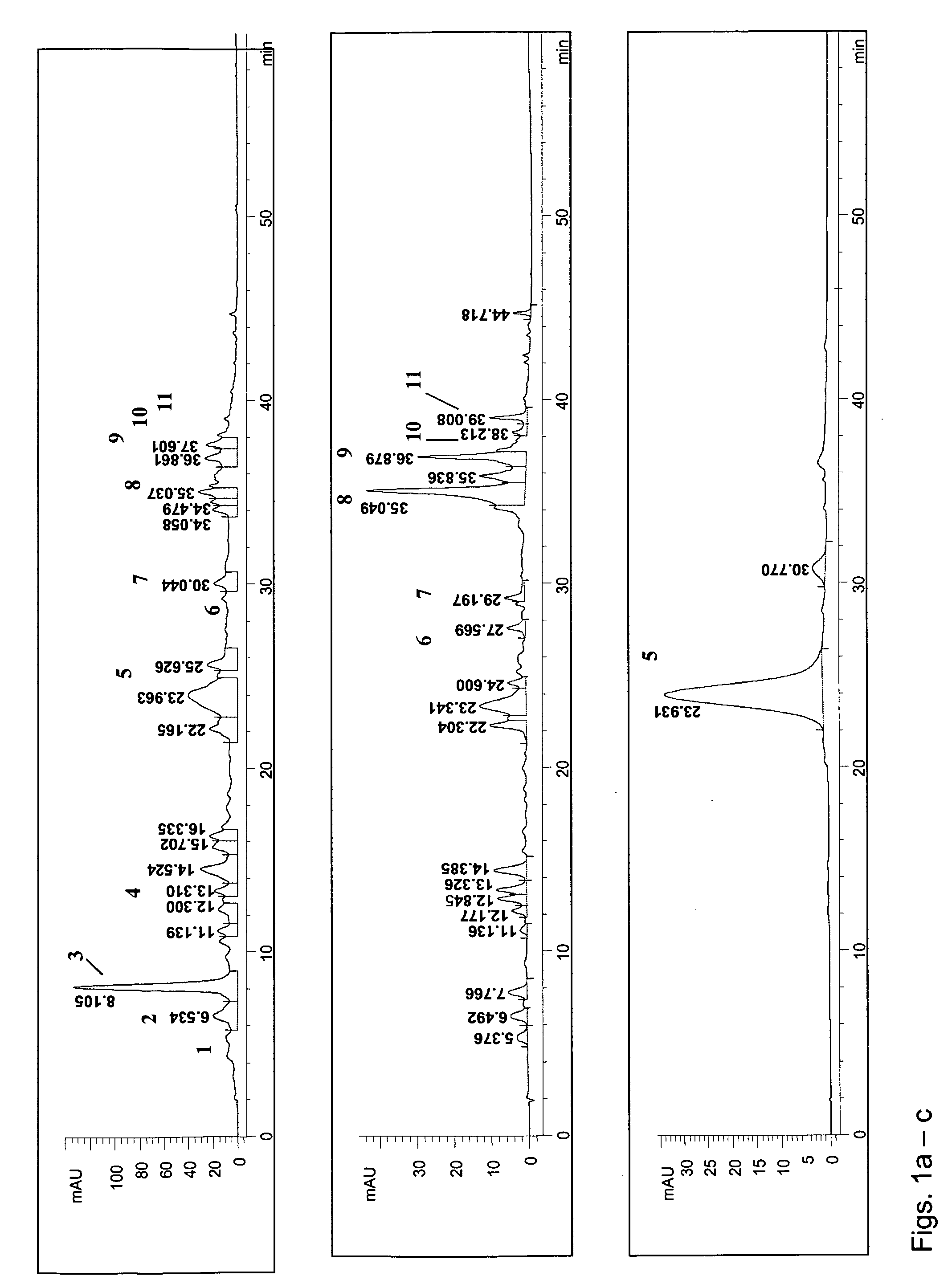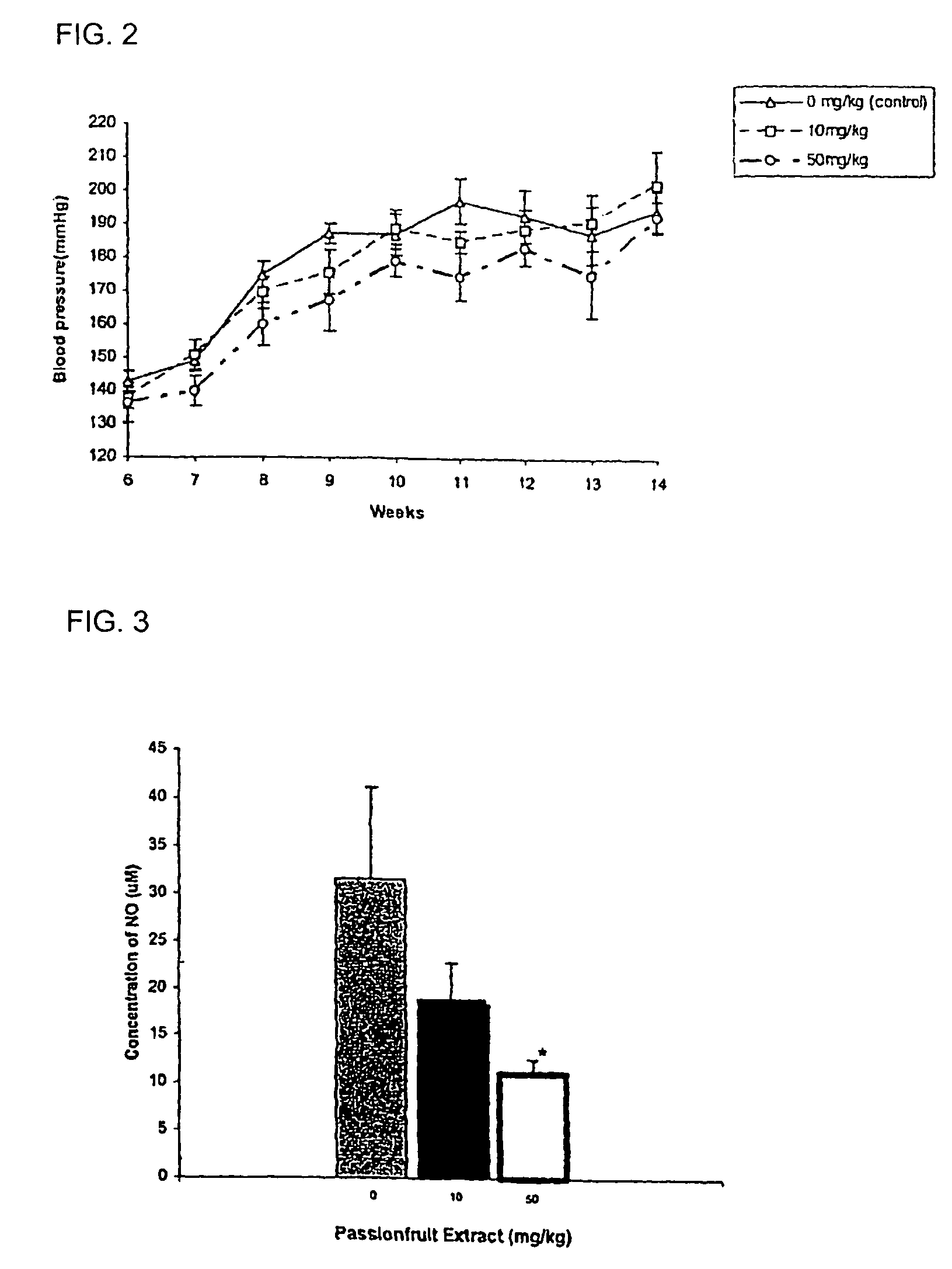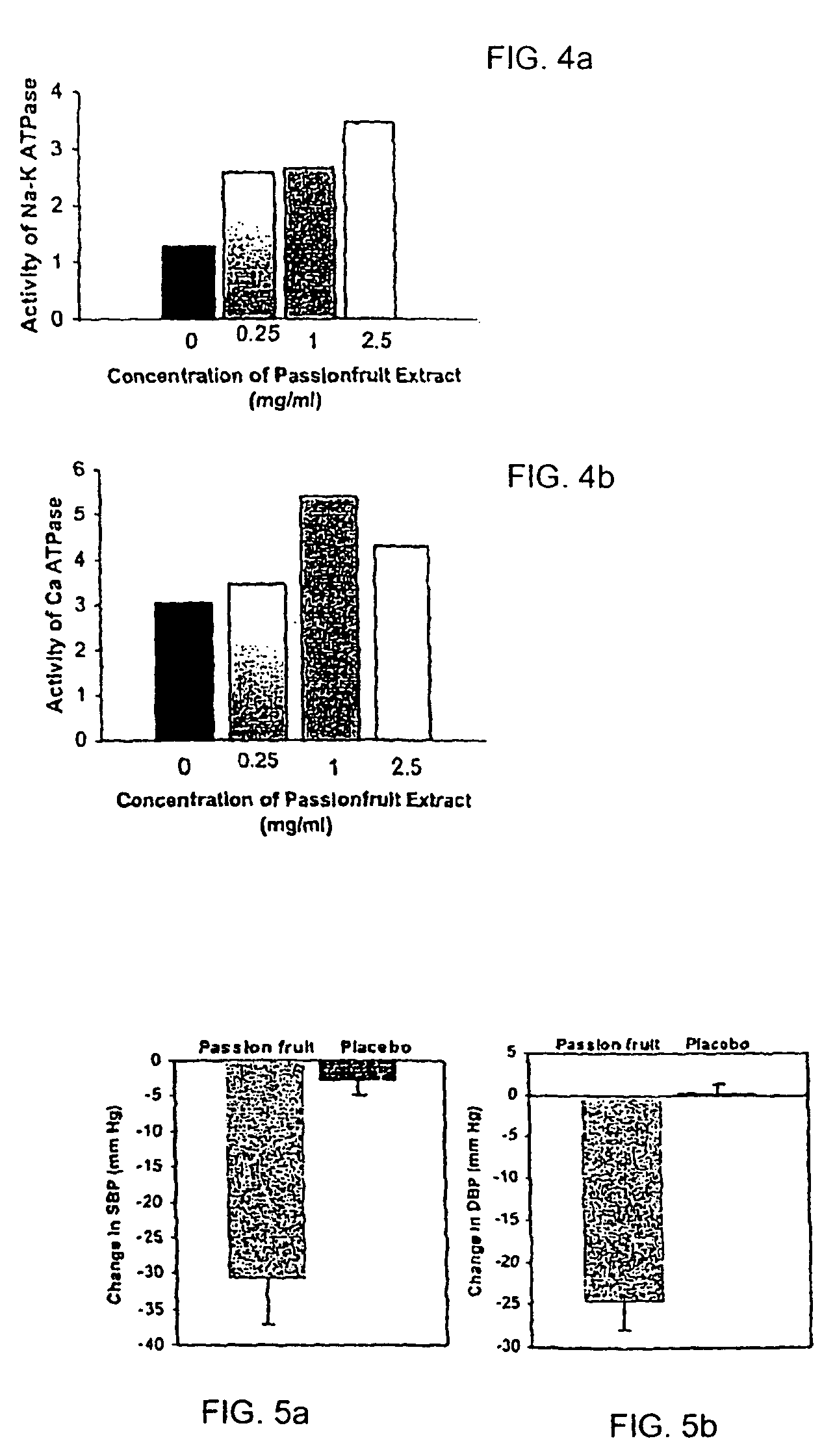Method of treating inflammation disorders using extracts of passion fruit
a passion fruit and inflammation technology, applied in the field of botanical extracts, can solve the problems of increasing the likelihood, insufficient treatment of too few patients, and insufficient control of hypertension, so as to prevent damage from free radicals, reduce serum lipid peroxidation, and preserve healthy tissue antioxidant vitamin levels
- Summary
- Abstract
- Description
- Claims
- Application Information
AI Technical Summary
Benefits of technology
Problems solved by technology
Method used
Image
Examples
example 1
Preparation of Passion Fruit Extract
[0069] Passion fruits (Passiflora edulis) were cut into halves and the juicy pulp removed to give empty shells of passion fruit skin. The shells were chopped into small pieces less than 10 mm in length and placed in a container. Hot water (65-75° C.) was added to the container to immerse the chopped shells completely. The mixture was stirred occasionally during the first hour and then left to soak overnight. The mixture was filtered and the filtrate passed through a column of non-ionic polymeric resin to absorb phenolic and other organic compounds. Distilled water was passed through the column to wash out sugars and other polar components. The absorbed compounds were then eluted from the column with methanol and the eluant concentrated under reduced pressure to give a dark concentrate. The concentrate was freeze-dried to give the passion fruit extract as a dark red powder. While methanol was used as the eluting agent, ethanol, isopropyl alcohol, ...
example 2
Determination of Components of Passion Fruit Extract
[0070] The components of the extract were determined by HPLC. Experiments were carried out on a Hewlett Packard 1100 instrument equipped with a DAD detector and a LiChrospher 100 RP-18 (um) column (125×4) held at 30° C. The solvent program started from 3.6% B (2% HOAc in acetonitrile) in solvent A (2% HOAc in water) up to 12% B in 20 min, to 20% in 30 min, and to 50% B in 45 min. Flow rate was set at mL / min and compounds were monitored by UV absorption set at 280 nm for phenolic acids, 350 nm for flavonoids and 520 nm for anthocyanins. The identity of the compounds was confirmed by comparison of retention times and UV / visible spectra with authentic materials.
example 3
Red Blood Cell Membrane Preparation and ATPase Assay
[0071] Erythrocyte membranes were prepared as previously described (Farrance, M L., & Vincenzi, F F. (1977) Biochim Biophys Acta 471:49-58). Briefly, blood was taken from healthy humans. Red blood cells were washed with saline and lysed in a hypotonic imidazole buffer (pH 7.4, 20 mM, Sigma) with EGTA (100 mM, Sigma) and PMSF (10 mM, Sigma). Membranes were washed with imidazole buffer (20 mM) containing EGTA and PMSF, imidazole buffer containing EGTA, and only imidazole buffer each one time in sequence. The final wash was in 40 mM histidine-imidazole buffer (pH 7.4), and the membranes were stored in a refrigerator (4-8° C.) under nitrogen. Prior to assay, RBC membrane (0.75 mg / mL) was incubated for 30 minutes at 37° C. with 0, 0.25, 1, 2.5 mg / mL of passion fruit skin extract and enough saline to achieve a final volume of 1 mL. Following incubation and centrifugation, the supernatants were removed and the membrane was resuspended in...
PUM
 Login to View More
Login to View More Abstract
Description
Claims
Application Information
 Login to View More
Login to View More - R&D
- Intellectual Property
- Life Sciences
- Materials
- Tech Scout
- Unparalleled Data Quality
- Higher Quality Content
- 60% Fewer Hallucinations
Browse by: Latest US Patents, China's latest patents, Technical Efficacy Thesaurus, Application Domain, Technology Topic, Popular Technical Reports.
© 2025 PatSnap. All rights reserved.Legal|Privacy policy|Modern Slavery Act Transparency Statement|Sitemap|About US| Contact US: help@patsnap.com



